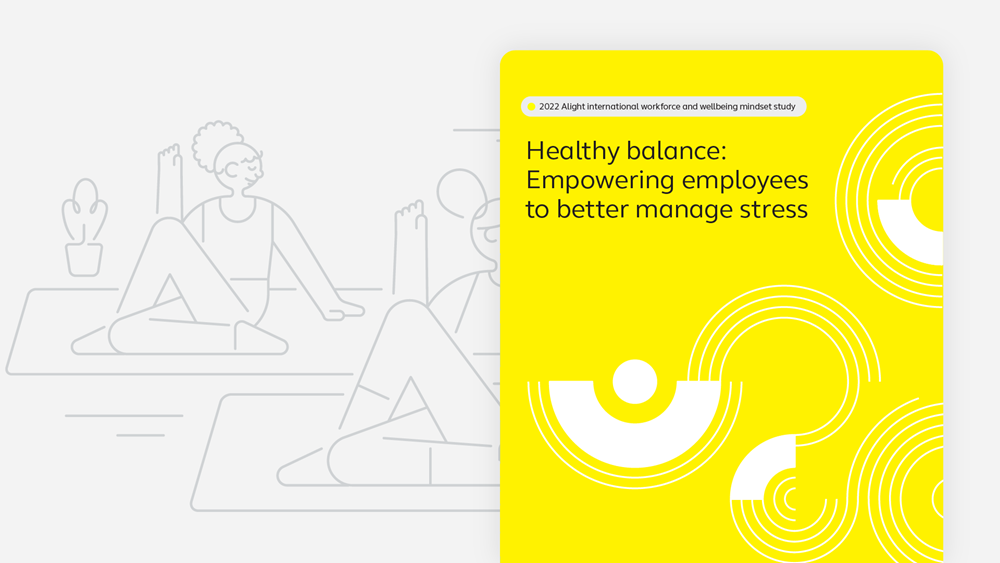
There is continued evidence of the mounting stress on today’s employees at home and at work. Recent data from the 2024 Alight Workforce and Wellbeing Mindset Study also found that 69% of employees in the U.S. rate their current stress levels as moderate or high.
Employee need support to address life’s stressors and reduce the potentially devastating effects on their lives—and on the business. No matter where your company is on its employee wellbeing journey, these steps will help reduce stress in the workplace:
- Consider flexibility for stress management: With greater flexibility, employees can alleviate stress, take care of their needs and be more productive when they are working. Remote work, hybrid work and return to office are all being implemented by employers, but employees may need even more than you realize. It’s not just about balance. It’s about doing things that matter to their mind, body, wallet and life. In fact, two-thirds of employees say they would find value in wellbeing tools and programs. Implementing extra wellness hours or designating a specific day each month for wellbeing activities can go a long way in encouraging stress reduction.
- Embrace digital tools for employee stress: Two-thirds (67%) of people want access to mental and emotional health apps. Digital tools provide mobile access to such resources. It’s important to provide a variety of options to help employees alleviate stress. Alight provides access to numerous providers of mental health support, featuring tools that can address and manage mental health challenges effectively.
employees would find value in wellbeing tools and programs
- Encourage stress relieving activities: Just one-third of employees report receiving any kind of personalized messaging around wellbeing in the past year. For companies that have launched—or will be launching—stress relief programs, such messaging needs to go beyond merely informing employees of what is available, but also propelling them to take action.
A few suggestions include:- Incentive programs
- Interactive workshops
- Wellbeing ambassadors
- Regular check-ins
- Leverage managers and business resource groups: Traditionally, managers have communicated around pay and performance, but one-third (34%) of workers say they receive no information about stress management and mental health. Managers need to be more knowledgeable about what offerings are available in order to successfully convey such information to workers. Another effective method for disseminating information is through business or employee resource groups (ERGs). These ERGs often serve as excellent channels for communication.
- Rethink corporate culture around stress and wellbeing: Most employees experience moderate to severe stress and over 40% report symptoms of burnout. A third of all employees dread going to work. It’s imperative to rethink corporate culture around employee stress. We can’t ignore how the overall employee experience is impacting our people’s mental and emotional health.
Fortunately, there is a solution. Alight helps the world’s best companies gain a benefits advantage and build a health and financially secure workforce. Partnering with Alight, it’s possible for managers and corporate leadership to play a major role in managing stress in the workplace.



